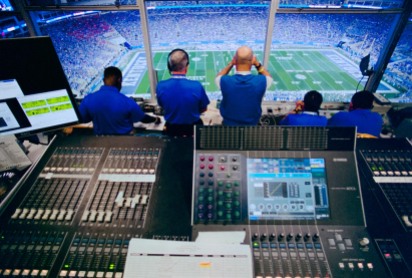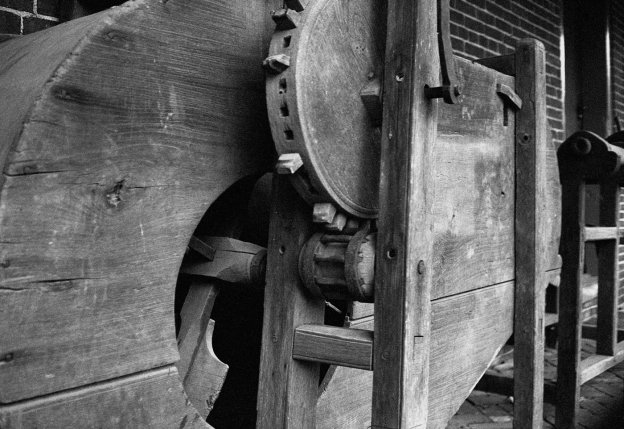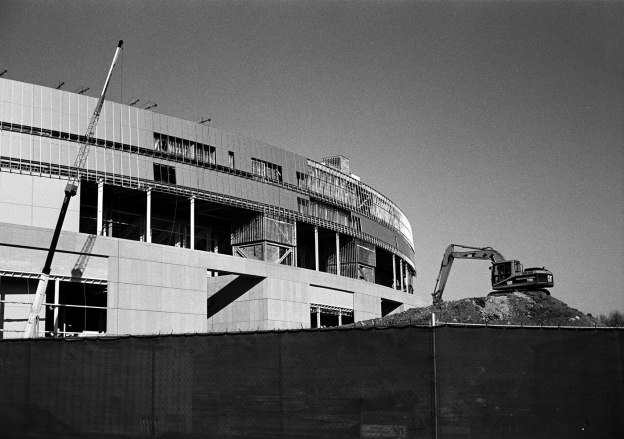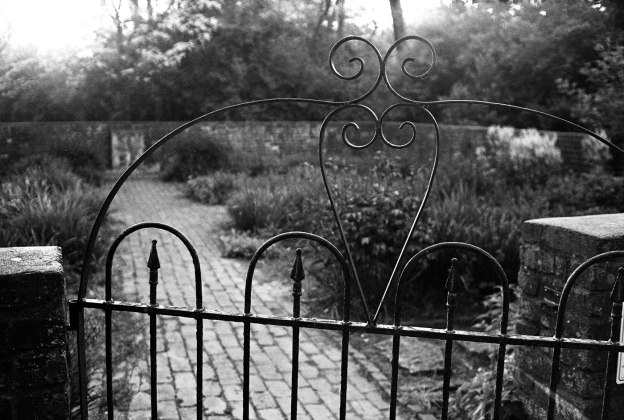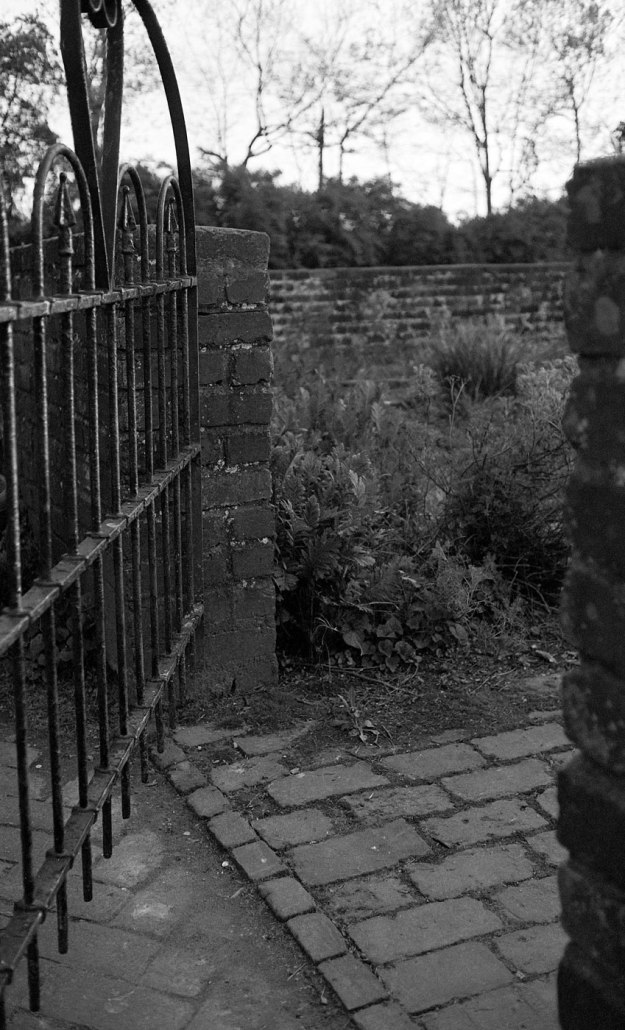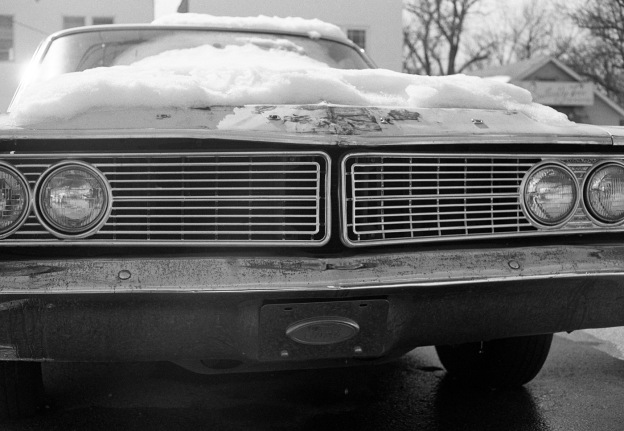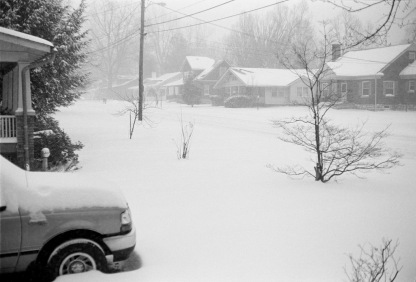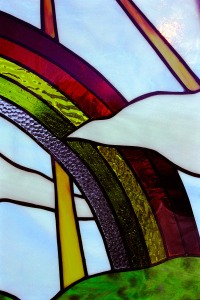I found an original Canon F-1 at a yard sale a couple of years ago by surprise. It was right in the prime of yard sale season and I was in pursuit of old magazines. I sell vintage ads (VintageVirtus on Etsy) and saw a Craigslist ad for “old magazines.” Milling around with a meager $60 in my pocket, I noticed a box with camera lenses sticking out. I slithered over to it, not wanting to look too excited and revealing that my heart had skipped a beat and my palms were starting to sweat. I reached into the 24-bottles-of-beer-sized cardboard box and started rummaging around. I was alone at this point, because this was a very large “living estate” sale spread out in the backyard of a modest ranch-style house. Everyone else was interested in fishing poles, kitchen ware, and lawn tools. One of the first things I noticed was a massive Soligor 500mm mirror lens. Hmmm…I already have one of these in a Canon FD mount…looks like this one is for Canon as well. There were a number of cameras, lenses, flashes, cases, and other accessories, and a large motor drive attachment. It said “Canon” on it and was heavy. I set it aside and plucked deeper, past a Minolta XG and a few point-and-shoots, to find the holy grail – a Canon F-1.
The camera had a zoom lens on it and seemed to be in decent shape, though dusty. I have always kept my eye out for an F-1 at yard sales and flea markets, but have never run across one. Plenty of AE-1s, a few A-1s and FTs, but never anything in this class at a yard sale. Just about then, a guy chewing on a cigar saw me digging in the gold mine and said, “Make me an offer. I want to get rid of everything.”
There were maybe 25 items in the box – an assortment of lenses, mostly Canons I already had and several off-brands, a Minolta SLR and lenses, point-and-shoots, a few flashes, and cases – nothing else I really wanted to keep or take the effort to sell. Not wanting to offend him by only offering $60 (what was in my pocket) for a whole box easily worth $300 in resale value, I asked if he would be willing to sell just a few items. “Sure!” he replied. So I hastily found a 50mm 1.4 lens, sloppily screwed the motor drive to the bottom of the F-1, and said, “How much for the Canon?”
He looked at me a moment and asked what lens I had there. “The standard 50,” I replied. The 50/1.4 is by no means “standard” in my book. It has great contrast, bokeh, speed, and sharpness. He paused a moment, took a puff on his cigar, and said, “$60.”
“Sold!” I cried out, not believing my stroke of luck that day. I should have gone to the track! I wound up hanging around a while to find out the history of the camera and how he used it. He bought it second-hand from a friend that barely used it. He liked to photograph his Navy ship models. He was in the Navy for years, and took up building small, accurate models of ships. He must have had 200 in display cases for sale. We talked a bit about his model building and Navy days, and then he asked my advice for better lighting of his models. I truly enjoyed my time with the former owner of my camera, but I couldn’t wait to get home and try out my new find.
I did an initial cleanup of the surface, fully expecting a layer of grime and pockets of ashes from his stogie. The first good sign was that it was surprisingly clean. The inside was pristine, save for the failing light seals. I checked all functions, and was happy to see that everything worked. I checked online to see exactly what model I had, because I’ve always been confused about the F-1 lineup. After research, I determined I had the very first F-1 model that Canon made, approximately 1971. Not a bad thing, but I was hoping for the more modern New F-1 from the 1980s.
I stuck a standard SR-44 button battery in it to see if the meter worked. It sprung to life…another good sign. I next loaded what seemed like a carload of batteries into the motor drive. After correctly attaching it to the bottom, it also sprung to life and whirred as I pressed the shutter. So far everything was looking great. I put some exposed test film in, and it advanced effortlessly. Wow, this was a nice camera and in great shape – and it was 45 years old.
In fact, after using this camera for a few years, I’ve found it to still operate like new. There’s some minor brassing (not always a bad thing), and someone has adjusted the meter (either mechanically or electronically using a diode) to take modern 1.55V batteries.
Many cameras from this timeline use the now-outlawed 1.35V mercury batteries. Modern users have several choices, from ignoring the higher readings a 1.55V battery gives, to adapting 1.35V hearing aid batteries, to modifying the camera’s electronics to take modern batteries. I choose to either a) use a handheld meter, b) use hearing aid batteries with an adapter, or c) modify the electronics with a diode. Each vintage camera requires a different decision.
I have fallen in love with this camera. I had often pulled out my Canon FTBn when I was feeling nostalgic. The FTBn is very similar, but is a consumer model. It has a solid build, accurate meter, and just feels good in the hands. (Read this great article that profiles the FTb and F-1). My love for the FD line of lenses has driven me to acquire several older Canon cameras to shoot with. I landed an A-1 about 10 years ago and tried to love it. I was enamored with the controls and layout, but couldn’t get past the clunky manual metering mode. I stumbled across an AE-1 and actually enjoyed shooting with it more than the A-1. I then found a T-90, which I found almost exciting. I love its multi-spot metering mode, which is similar to the dead-simple Olympus OM-4. But again, I found it a little clunky. I have to remind myself that these cameras came out in the 70s and 80s and were light years ahead of their competitors.
 I am a mostly manual setting shooter, occasionally switching to aperture priority if I can lock exposure. I looked at the Canon AV-1 but was scared off by its consumer-oriented build. And then the F-1 entered my world. I think the combined pro-level build, the weight, and the ergonomics have won me over. I started my semi-pro career in the 1970s with a Minolta SRT-101, so grabbing metal dials on the top of the camera, twisting rings around the lens, and pushing a mechanical shutter button come naturally for me. Plus, the dead-on meter gives me confidence when out in the field without a handheld meter.
I am a mostly manual setting shooter, occasionally switching to aperture priority if I can lock exposure. I looked at the Canon AV-1 but was scared off by its consumer-oriented build. And then the F-1 entered my world. I think the combined pro-level build, the weight, and the ergonomics have won me over. I started my semi-pro career in the 1970s with a Minolta SRT-101, so grabbing metal dials on the top of the camera, twisting rings around the lens, and pushing a mechanical shutter button come naturally for me. Plus, the dead-on meter gives me confidence when out in the field without a handheld meter.
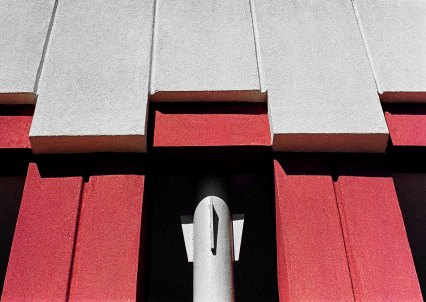
Central Support (Canon F-1, Kodak Portra 400)
The motor drive (Motor Drive F) is competent, but pretty heavy for my style of shooting. The finder is pretty good, but I have a little trouble focusing. I’ll have to seek out a diopter or newer split-prism finder. The film advance is solid and smooth. It has mirror lock-up for long exposures. Mine has the Flash Coupler F, which essentially puts a regular hot shoe over the prism like most later cameras. The F-1 had that awkward rewind-side-mounted flash contact similar to the Nikon F, F2, and F3, so this is a welcome addition when I use a flash.
The camera by itself is a little heavy, but I don’t mind that. I prefer some weight to help in steadying my slow shutter shots. That sounds silly, but if a camera is too lightweight, your shaky arms and hands are telegraphed to the camera. A little weight seems to dampen the small movements that ruin photos. Of course too heavy and your arms shake, so this is a good balance. I have to be careful when laying it down, as it may dent the surface I’m setting it on. Lay it down slowly and softly. Don’t worry about the camera, it’s a tank.

Jasper (Canon F-1, Kodak Ektar 100)
The match-needle meter is dead-on accurate. It takes a little getting used to though. You don’t see the needle if the light is too low and your speed or aperture are set too high. Don’t panic, adjust the speed and/or aperture until it pops into view on the bottom. The only light the viewfinder gets is natural light via a little translucent window on the top left of the body. They made a light accessory (and about a thousand other accessories) for low light situations. The only other information you get is the speed, again lit by that little window.
This is a fully manual camera, which is fine for me. I’ll take advantage of aperture-priority when it’s available, but my basic shooting style is full manual. I prefer to have a built-in meter when shooting 35mm, my speed control on top, and my aperture control around the ring. It’s how I learned, and the F-1 fits. When I’m shooting an unusual vintage camera, like my Zeiss-Ikon Contaflex, a Voigtlander Vitessa, or even my Olympus OM-1,2,4, I have to think for a split second about where the settings are. Not so with the F-1. This may be why Canon stuck with familiar industry standards for their pro line.
Which brings me to why this camera is interesting to me. This is Canon’s first attempt at a pro-level camera. This is before the T-90, the EOS-1V and the EOS-1D. It was Canon’s answer to the Nikon F and F2. It has one of the most comprehensive lineup of accessories ever produced for a 35mm camera. And being pro-level, you get solid build, exchangeable prisms and focus screens, different motor drives and power options, databacks, flashes, lenses, and the list goes on. If I take care of it, I feel like this camera will still be performing 45 years from now. And with the love this cameras gives back to me, I’m not sorry this isn’t a New F-1. Because this is the wise old granddaddy of them all.
Here are some pictures from this great camera, all on FD lenses.


